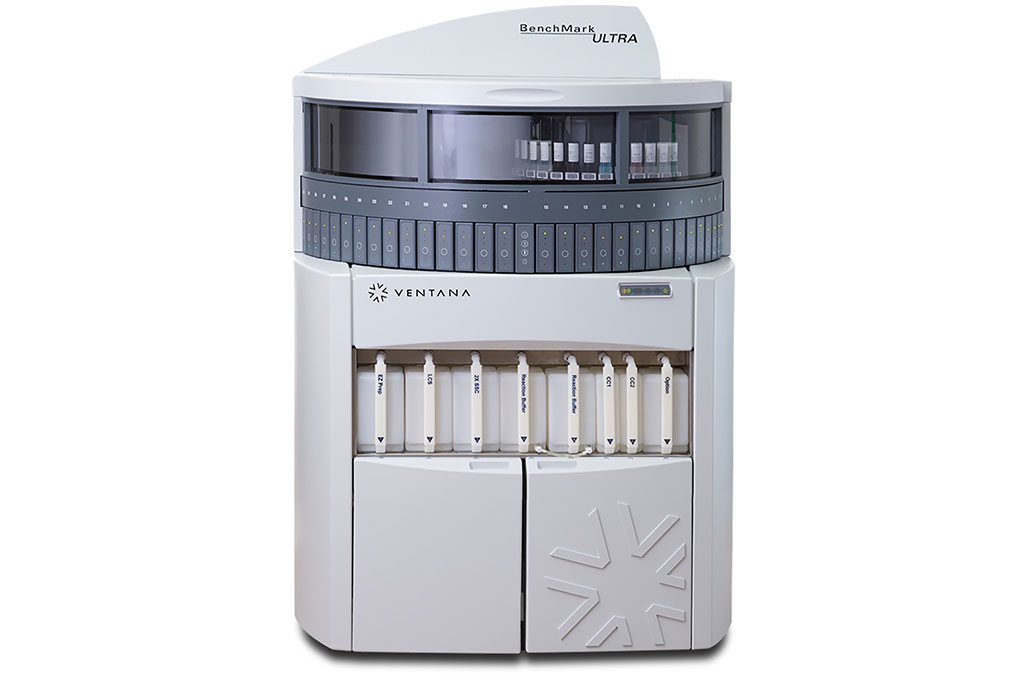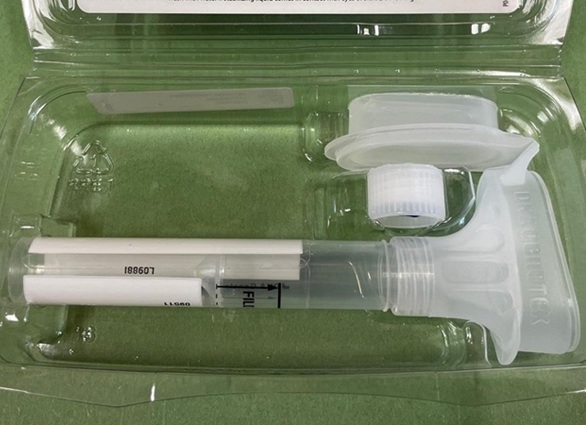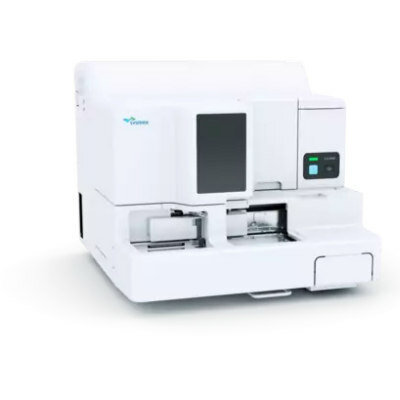Gene Expression Profiling of Mucinous Ovarian Tumors Identifies Prognosis Markers
|
By LabMedica International staff writers Posted on 18 Oct 2022 |

Advanced stage mucinous ovarian tumors have poor chemotherapy response and prognosis and lack biomarkers to aid Stage I adjuvant treatment. Differentiating primary mucinous ovarian carcinoma (MOC) from gastrointestinal (GI) metastases to the ovary is also challenging due to phenotypic similarities.
MOC is a rare histological type that is less well characterized compared to more common ovarian cancer histotypes. A clinical problem frequently encountered in patients diagnosed with advanced stage MOC is the uncertainty as to whether the primary cancer is ovarian or metastatic from other sites. Metastases typically originate from the gastrointestinal (GI) tract, and the primary tumor may not be evident at surgery or on imaging.
A large international team of Medical Scientists led by the group at The University of New South Wales (Sydney, Australia) analyzed clinicopathological and gene expression data were to identify prognostic and diagnostic features. Discovery analyses selected 19 genes with prognostic/diagnostic potential. Validation was performed through the Ovarian Tumor Tissue Analysis consortium and GI cancer biobanks comprising 604 patients: 333 with MOC, 151 with mucinous borderline ovarian tumors (MBOT), 65 with upper G, and 55 with lower GI tumors.
RNA samples from a total of 634 patients were eligible for the NCounter PlexSet assay (Nanostring, Seattle, WA, USA) extracted from either 403 formalin-fixed, paraffin embedded (FFPE) whole sections, 191 FFPE cores, or 40 fresh-frozen sections. A second sample was analyzed in a subset of 33 patients: either multiple blocks from the same tumor or multiple tumor tissue sites. The team performed ERBB2/HER2 immunochemistry (IHC) using anti-HER2/neu (4B5), and Silver-enhanced in situ hybridization (SISH) using HER2/Ch17 Dual ISH DNA Probe Cocktail, (Roche Diagnostics, Indianapolis, IN, USA). Staining was performed on the Ventana Benchmark ULTRA Platform (Roche Group, Tucson, AZ, USA) on 4 µm tissue microarray sections for a subset of cases from one study.
The investigators reported that infiltrative pattern of invasion was associated with decreased overall survival (OS) within 2-years from diagnosis, compared with expansile pattern in Stage I MOC (hazard ratio HR 2.77). Increased expression of THBS2 and TAGLN were associated with shorter OS in MOC patients, (HR 1.25) and (1.21) respectively. ERBB2 (HER2)-amplification or high mRNA expression was evident in 64/243 (26%) of MOCs, but only 8/243 (3%) were also infiltrative (4/39, 10%) or Stage III/IV (4/31, 13%).
The authors concluded that an infiltrative growth pattern infers poor prognosis within 2-years from diagnosis and may help select Stage I patients for adjuvant therapy. High expression of THBS2 and TAGLN in MOC confer an adverse prognosis and is upregulated in the infiltrative subtype which warrants further investigation. Anti-HER2 therapy should be investigated in a subset of patients. MOC samples clustered with upper GI, yet markers to differentiate these entities remain elusive, suggesting similar underlying biology and shared treatment strategies. The study was published on October 12, 2022 in the journal Clinical Cancer Research.
Related Links:
The University of New South Wales
Nanostring
Roche Diagnostics
Roche Group
Latest Pathology News
- Spit Test More Accurate at Identifying Future Prostate Cancer Risk
- DNA Nanotechnology Boosts Sensitivity of Test Strips
- Novel UV and Machine Learning-Aided Method Detects Microbial Contamination in Cell Cultures
- New Error-Corrected Method to Help Detect Cancer from Blood Samples Alone
- "Metal Detector" Algorithm Hunts Down Vulnerable Tumors
- Novel Technique Uses ‘Sugar’ Signatures to Identify and Classify Pancreatic Cancer Cell Subtypes
- Advanced Imaging Reveals Mechanisms Causing Autoimmune Disease
- AI Model Effectively Predicts Patient Outcomes in Common Lung Cancer Type
- AI Model Predicts Patient Response to Bladder Cancer Treatment
- New Laser-Based Method to Accelerate Cancer Diagnosis
- New AI Model Predicts Gene Variants’ Effects on Specific Diseases
- Powerful AI Tool Diagnoses Coeliac Disease from Biopsy Images with Over 97% Accuracy
- Pre-Analytical Conditions Influence Cell-Free MicroRNA Stability in Blood Plasma Samples
- 3D Cell Culture System Could Revolutionize Cancer Diagnostics
- Painless Technique Measures Glucose Concentrations in Solution and Tissue Via Sound Waves
- Skin-Based Test to Improve Diagnosis of Rare, Debilitating Neurodegenerative Disease
Channels
Clinical Chemistry
view channel
‘Brilliantly Luminous’ Nanoscale Chemical Tool to Improve Disease Detection
Thousands of commercially available glowing molecules known as fluorophores are commonly used in medical imaging, disease detection, biomarker tagging, and chemical analysis. They are also integral in... Read more
Low-Cost Portable Screening Test to Transform Kidney Disease Detection
Millions of individuals suffer from kidney disease, which often remains undiagnosed until it has reached a critical stage. This silent epidemic not only diminishes the quality of life for those affected... Read more
New Method Uses Pulsed Infrared Light to Find Cancer's 'Fingerprints' In Blood Plasma
Cancer diagnoses have traditionally relied on invasive or time-consuming procedures like tissue biopsies. Now, new research published in ACS Central Science introduces a method that utilizes pulsed infrared... Read moreHematology
view channel
New Scoring System Predicts Risk of Developing Cancer from Common Blood Disorder
Clonal cytopenia of undetermined significance (CCUS) is a blood disorder commonly found in older adults, characterized by mutations in blood cells and a low blood count, but without any obvious cause or... Read more
Non-Invasive Prenatal Test for Fetal RhD Status Demonstrates 100% Accuracy
In the United States, approximately 15% of pregnant individuals are RhD-negative. However, in about 40% of these cases, the fetus is also RhD-negative, making the administration of RhoGAM unnecessary.... Read moreImmunology
view channel
Stem Cell Test Predicts Treatment Outcome for Patients with Platinum-Resistant Ovarian Cancer
Epithelial ovarian cancer frequently responds to chemotherapy initially, but eventually, the tumor develops resistance to the therapy, leading to regrowth. This resistance is partially due to the activation... Read more
Machine Learning-Enabled Blood Test Predicts Immunotherapy Response in Lymphoma Patients
Chimeric antigen receptor (CAR) T-cell therapy has emerged as one of the most promising recent developments in the treatment of blood cancers. However, over half of non-Hodgkin lymphoma (NHL) patients... Read moreMicrobiology
view channel
Handheld Device Delivers Low-Cost TB Results in Less Than One Hour
Tuberculosis (TB) remains the deadliest infectious disease globally, affecting an estimated 10 million people annually. In 2021, about 4.2 million TB cases went undiagnosed or unreported, mainly due to... Read more
New AI-Based Method Improves Diagnosis of Drug-Resistant Infections
Drug-resistant infections, particularly those caused by deadly bacteria like tuberculosis and staphylococcus, are rapidly emerging as a global health emergency. These infections are more difficult to treat,... Read more
Breakthrough Diagnostic Technology Identifies Bacterial Infections with Almost 100% Accuracy within Three Hours
Rapid and precise identification of pathogenic microbes in patient samples is essential for the effective treatment of acute infectious diseases, such as sepsis. The fluorescence in situ hybridization... Read morePathology
view channel
Spit Test More Accurate at Identifying Future Prostate Cancer Risk
Currently, blood tests that measure the level of a protein called prostate-specific antigen (PSA) are commonly used to identify men at higher risk for prostate cancer. This test is typically used based... Read moreDNA Nanotechnology Boosts Sensitivity of Test Strips
Since the Covid-19 pandemic, most people have become familiar with paper-based rapid test strips, also known as lateral flow immunoassays (LFIAs). These tests are used to quickly detect biomarkers that... Read more
Novel UV and Machine Learning-Aided Method Detects Microbial Contamination in Cell Cultures
Cell therapy holds great potential in treating diseases such as cancers, inflammatory conditions, and chronic degenerative disorders by manipulating or replacing cells to restore function or combat disease.... Read moreTechnology
view channel
Disposable Microchip Technology Could Selectively Detect HIV in Whole Blood Samples
As of the end of 2023, approximately 40 million people globally were living with HIV, and around 630,000 individuals died from AIDS-related illnesses that same year. Despite a substantial decline in deaths... Read more
Pain-On-A-Chip Microfluidic Device Determines Types of Chronic Pain from Blood Samples
Chronic pain is a widespread condition that remains difficult to manage, and existing clinical methods for its treatment rely largely on self-reporting, which can be subjective and especially problematic... Read more
Innovative, Label-Free Ratiometric Fluorosensor Enables More Sensitive Viral RNA Detection
Viruses present a major global health risk, as demonstrated by recent pandemics, making early detection and identification essential for preventing new outbreaks. While traditional detection methods are... Read moreIndustry
view channel
Cepheid and Oxford Nanopore Technologies Partner on Advancing Automated Sequencing-Based Solutions
Cepheid (Sunnyvale, CA, USA), a leading molecular diagnostics company, and Oxford Nanopore Technologies (Oxford, UK), the company behind a new generation of sequencing-based molecular analysis technologies,... Read more
Grifols and Tecan’s IBL Collaborate on Advanced Biomarker Panels
Grifols (Barcelona, Spain), one of the world’s leading producers of plasma-derived medicines and innovative diagnostic solutions, is expanding its offer in clinical diagnostics through a strategic partnership... Read more




















